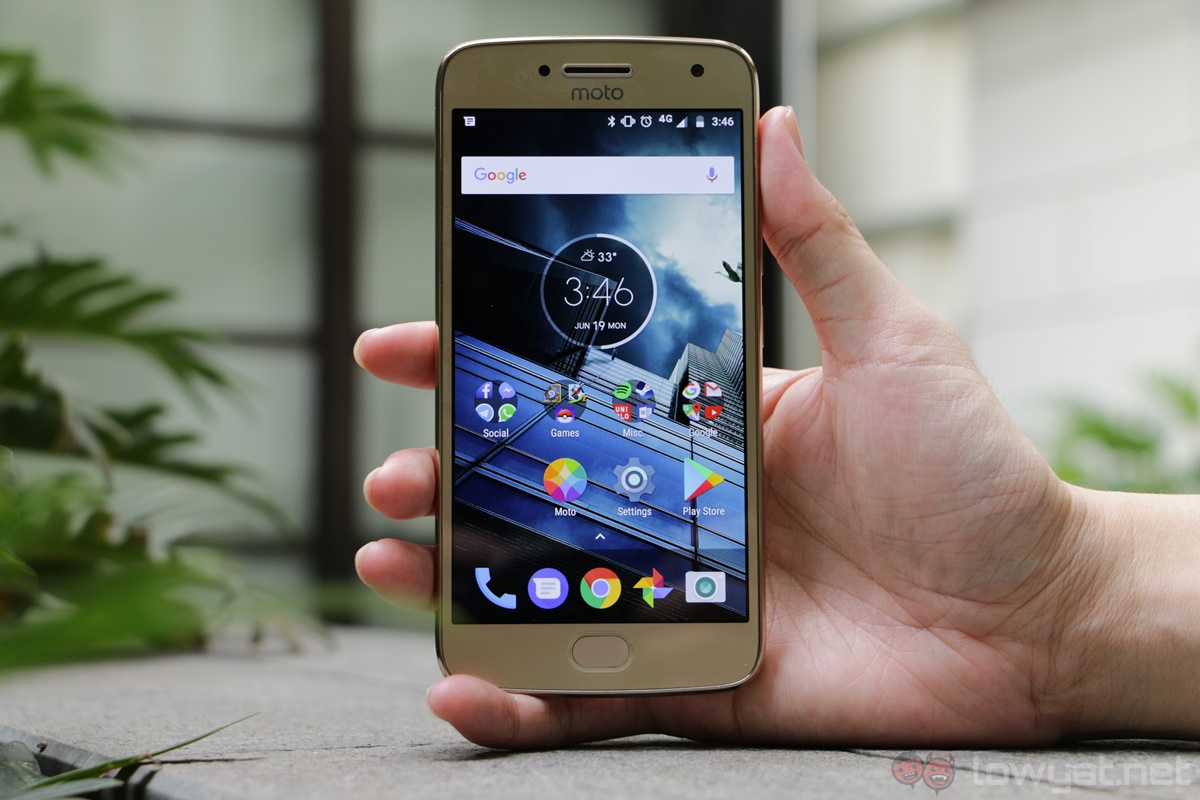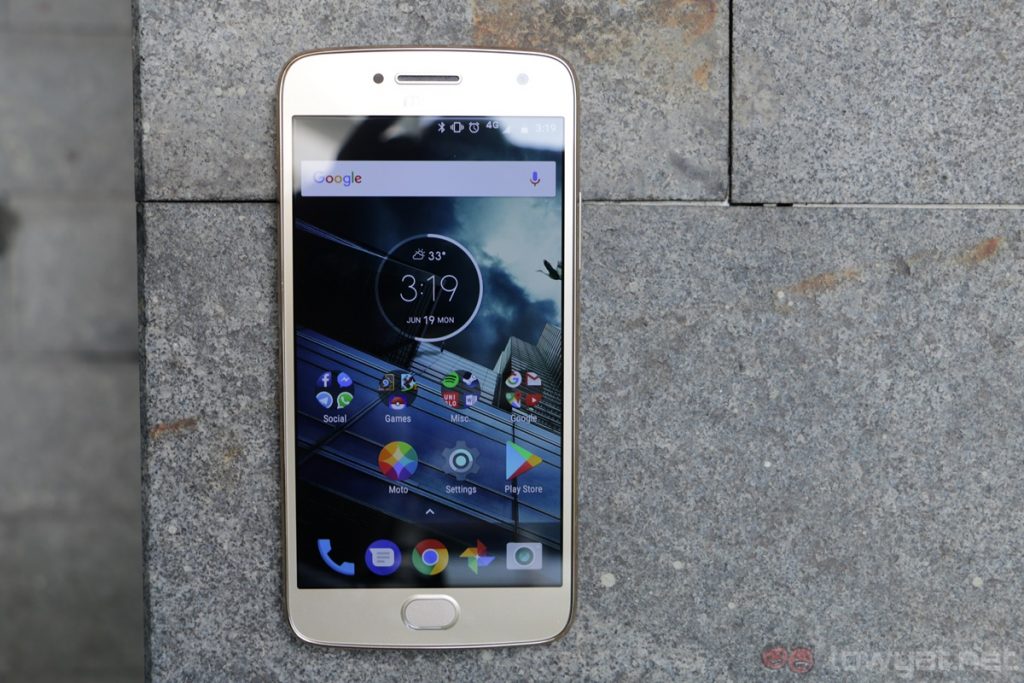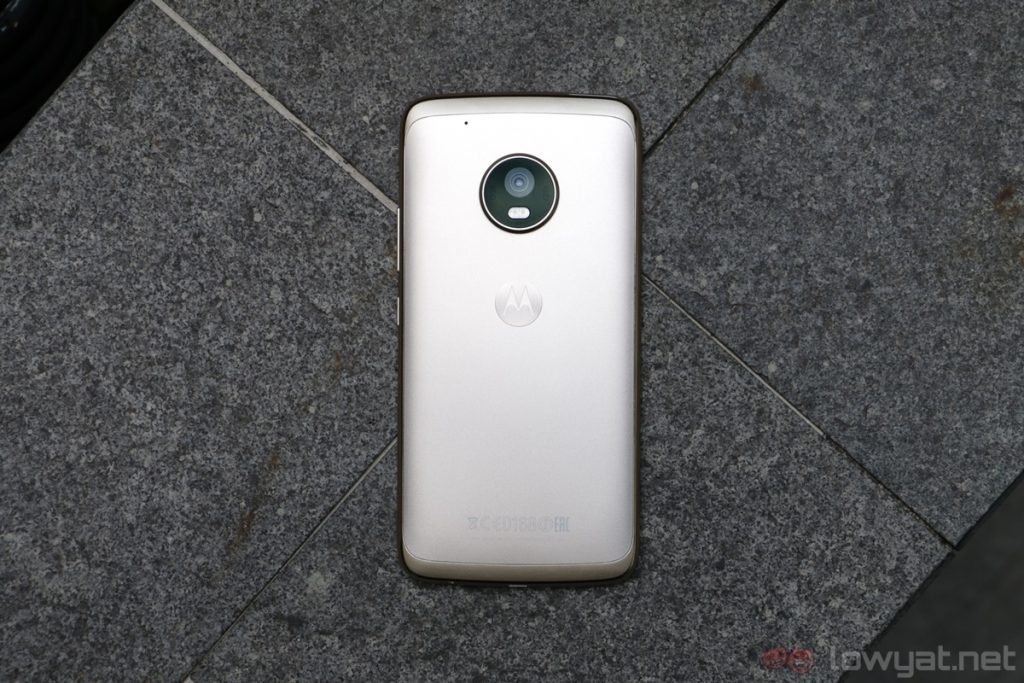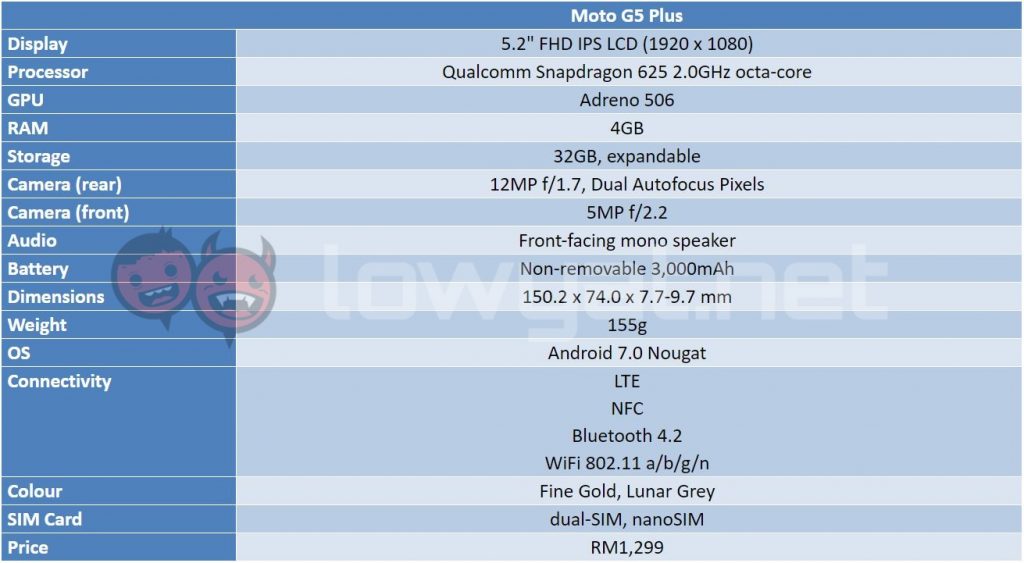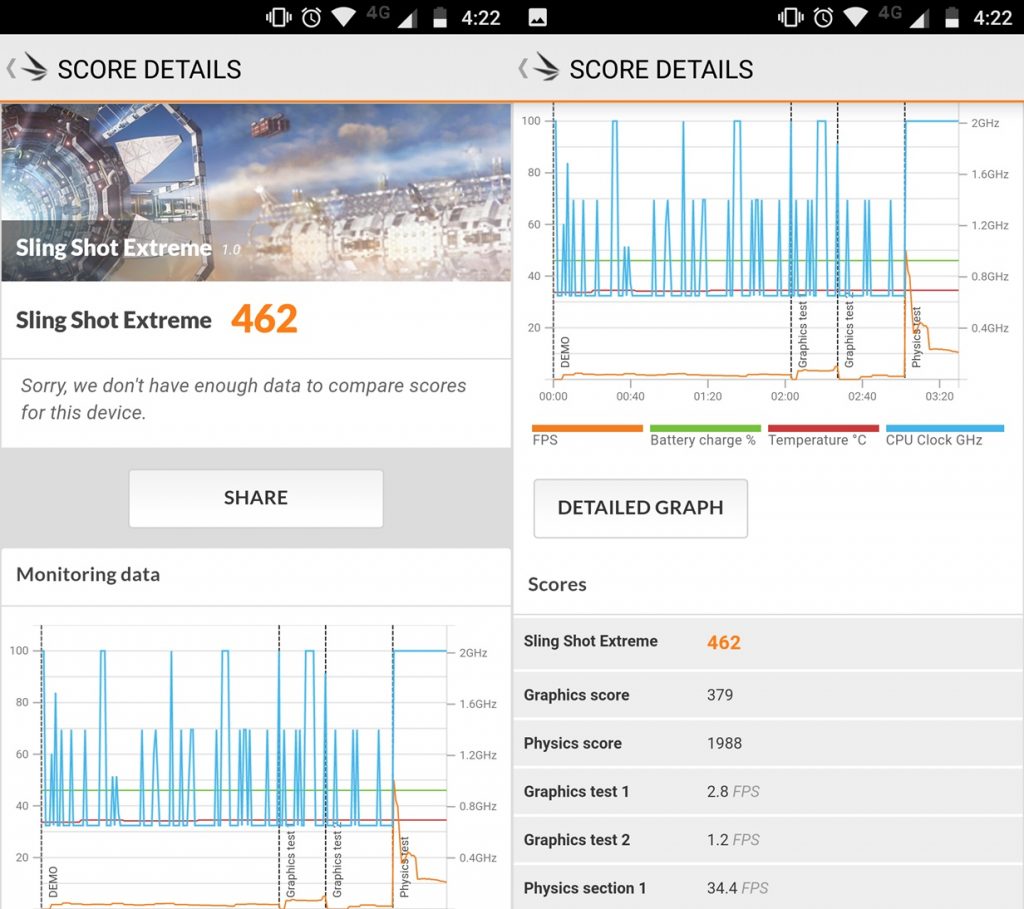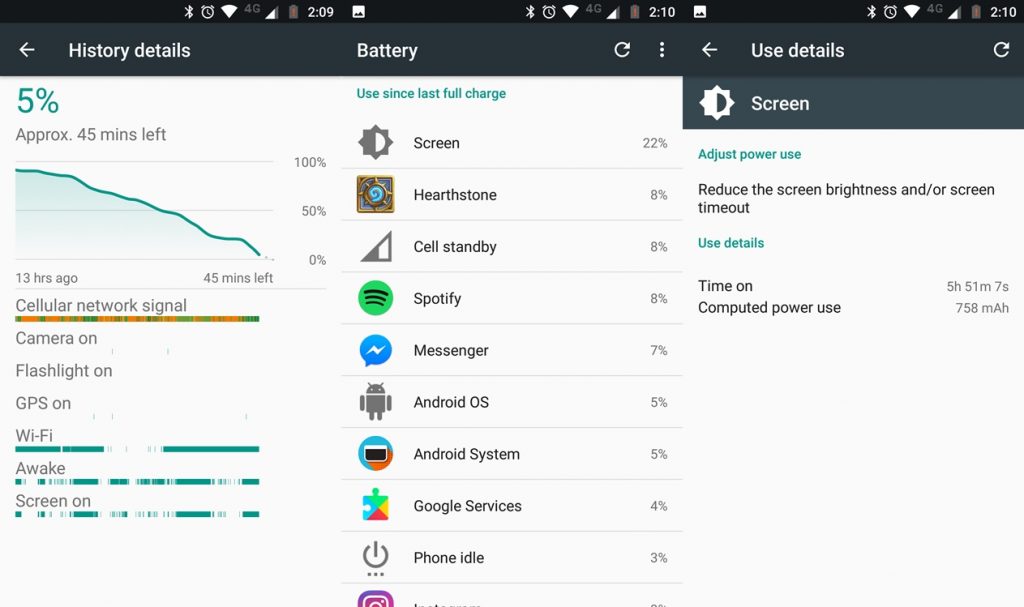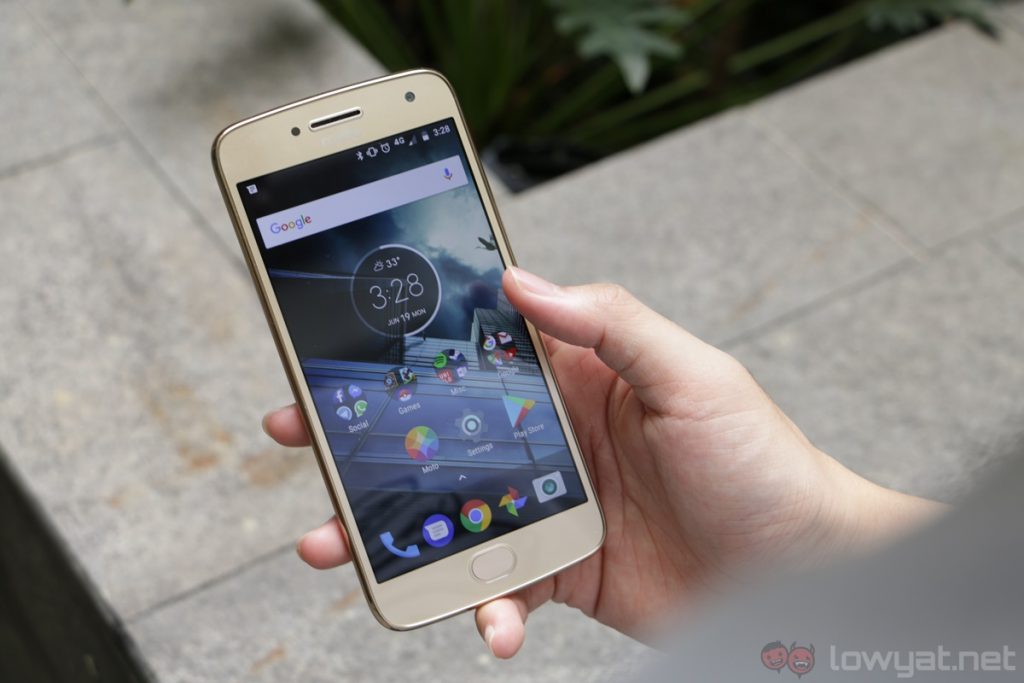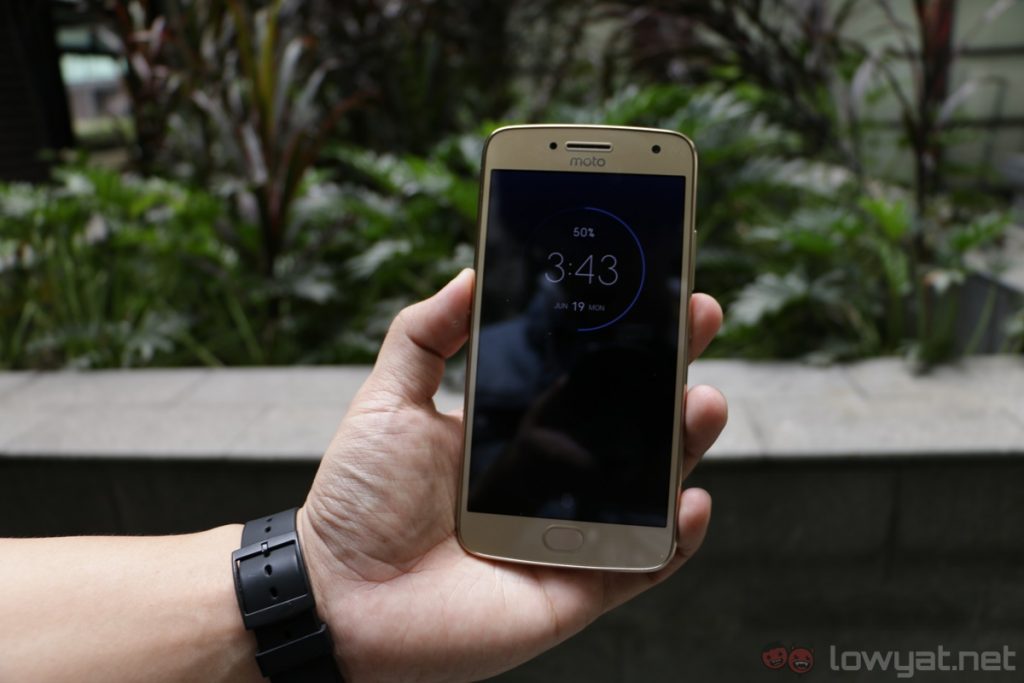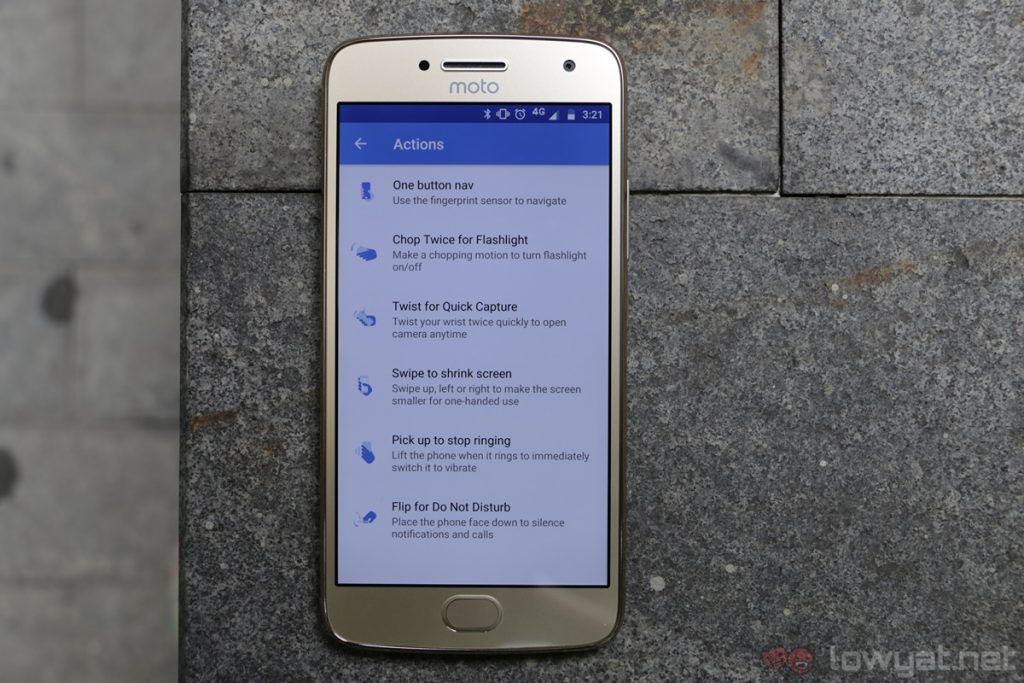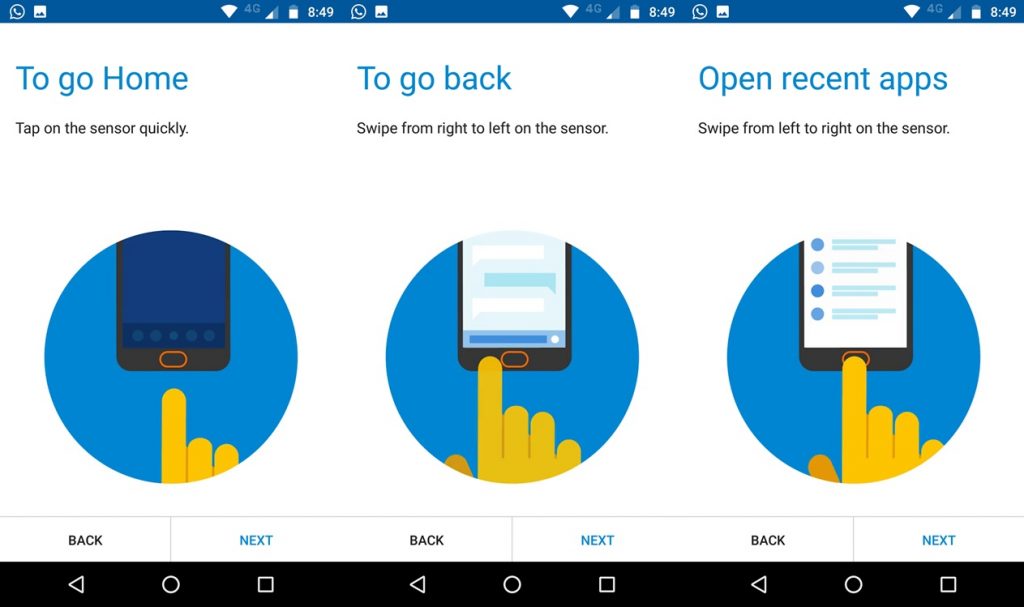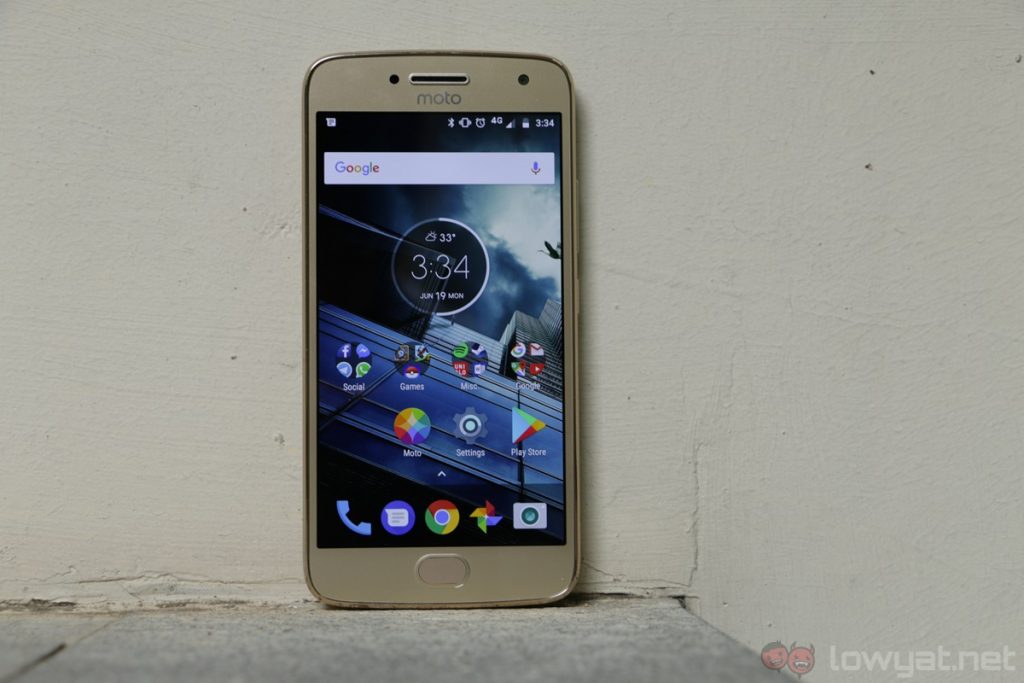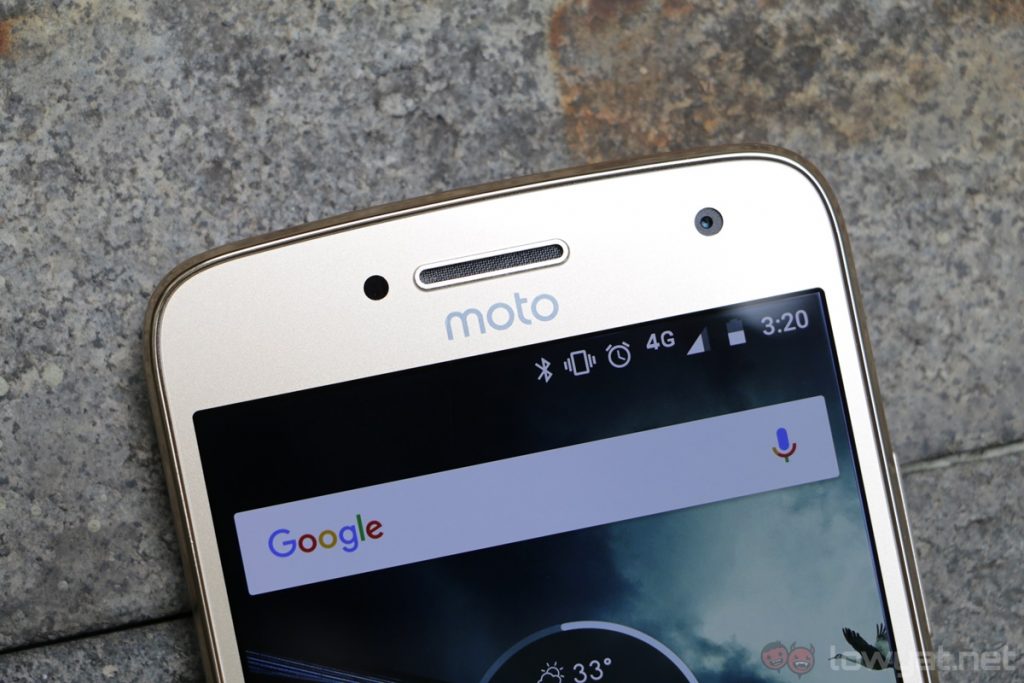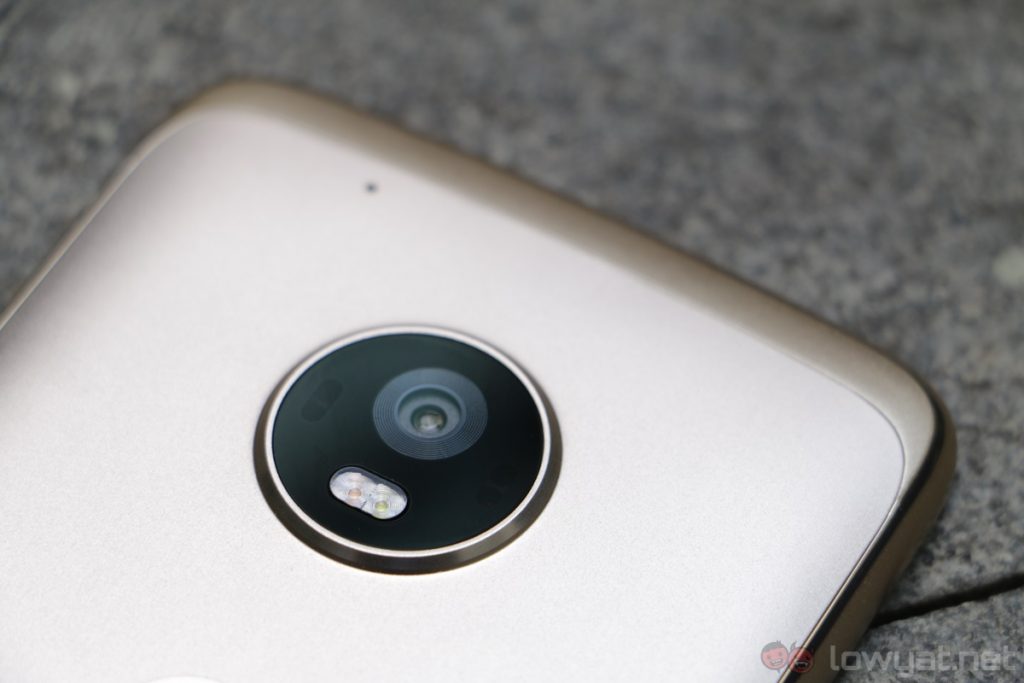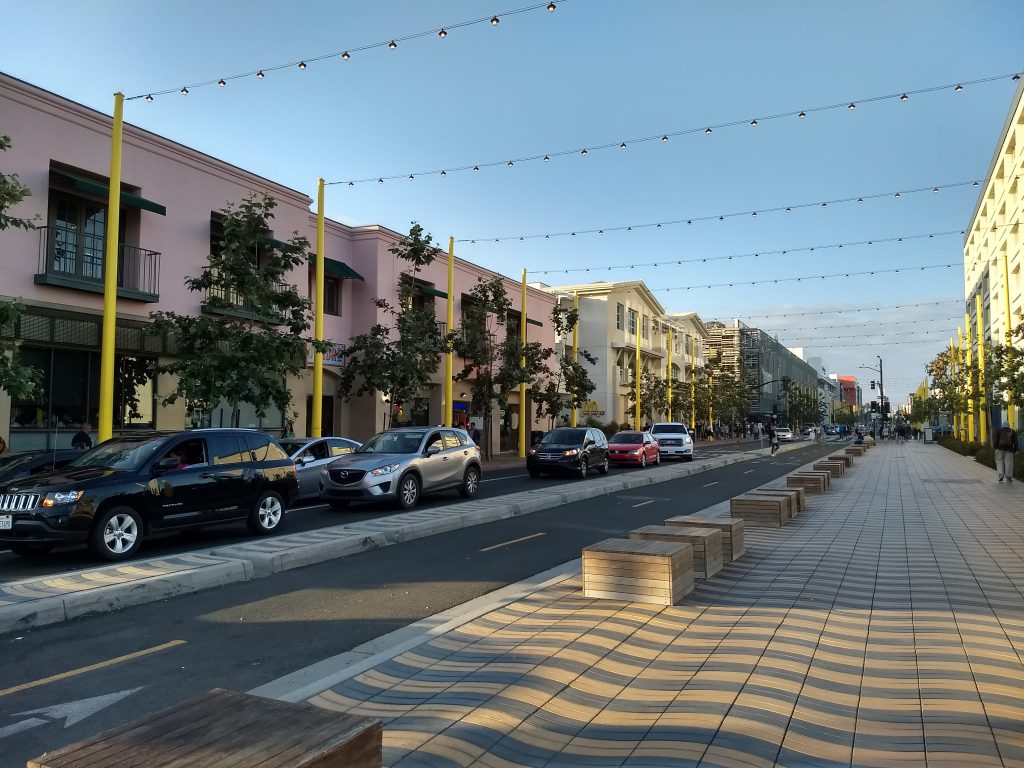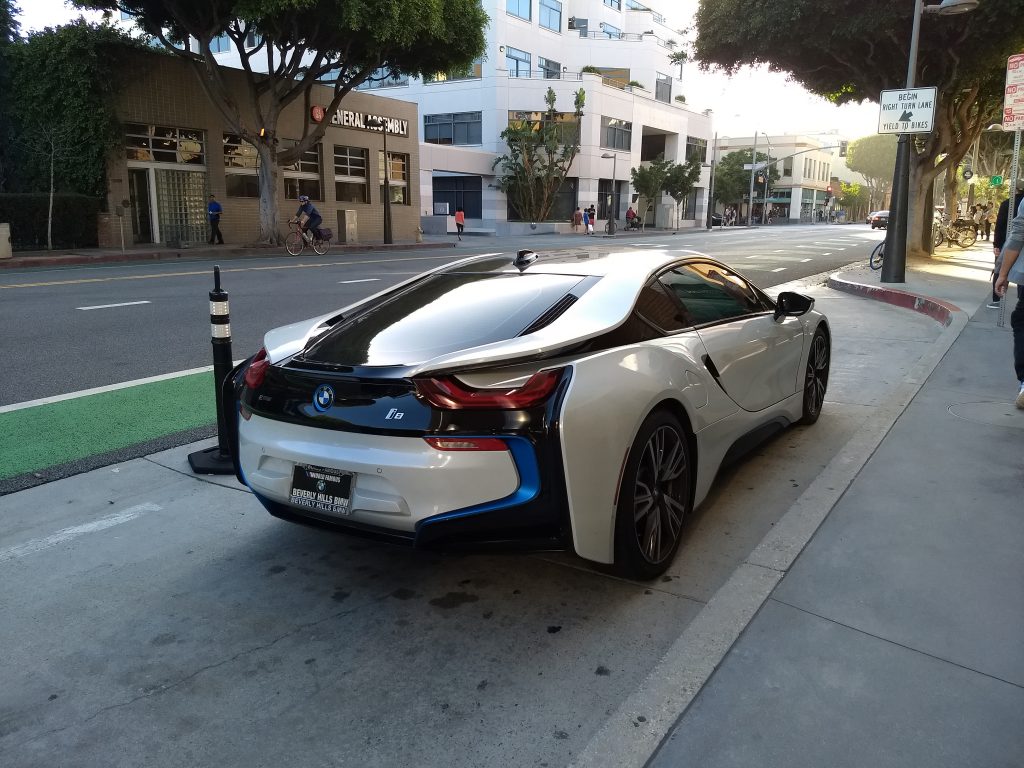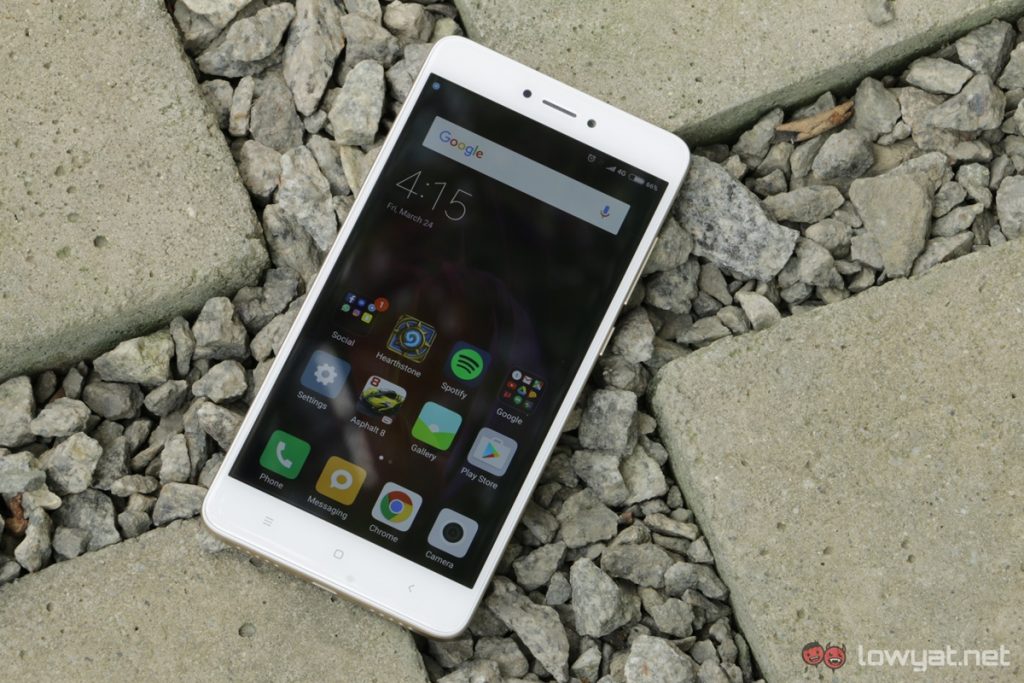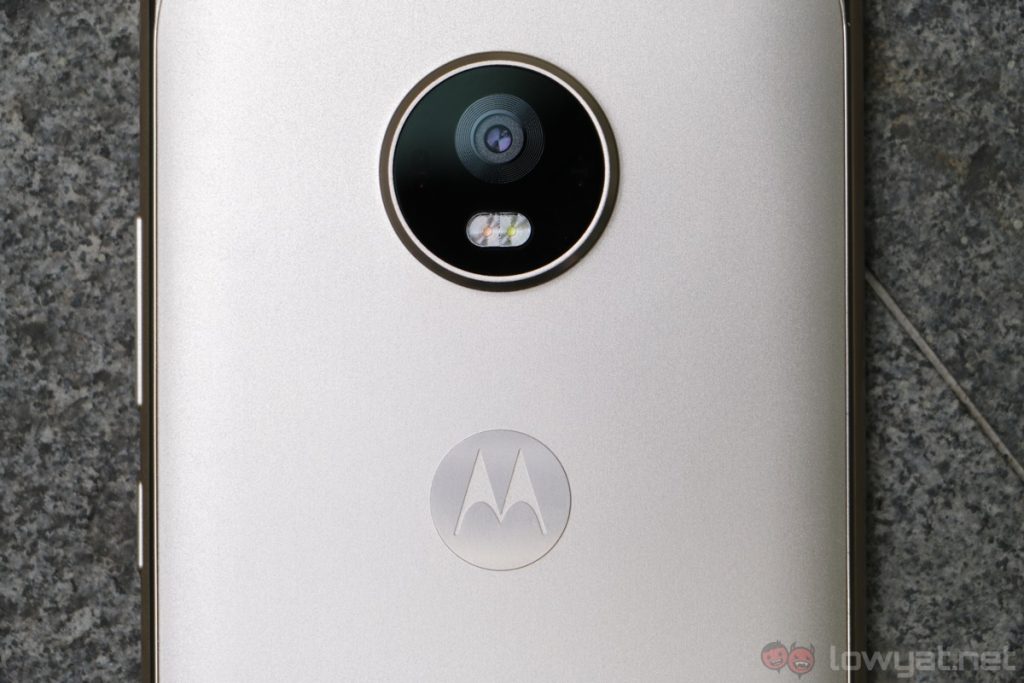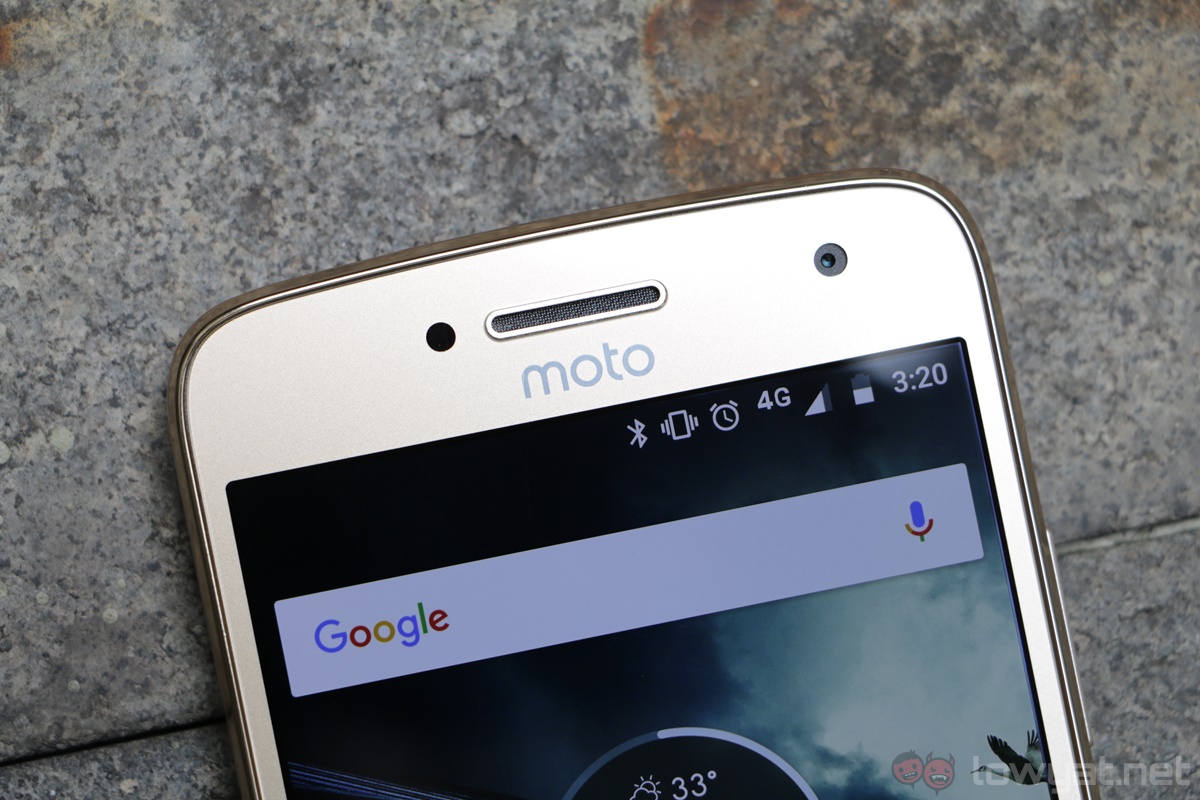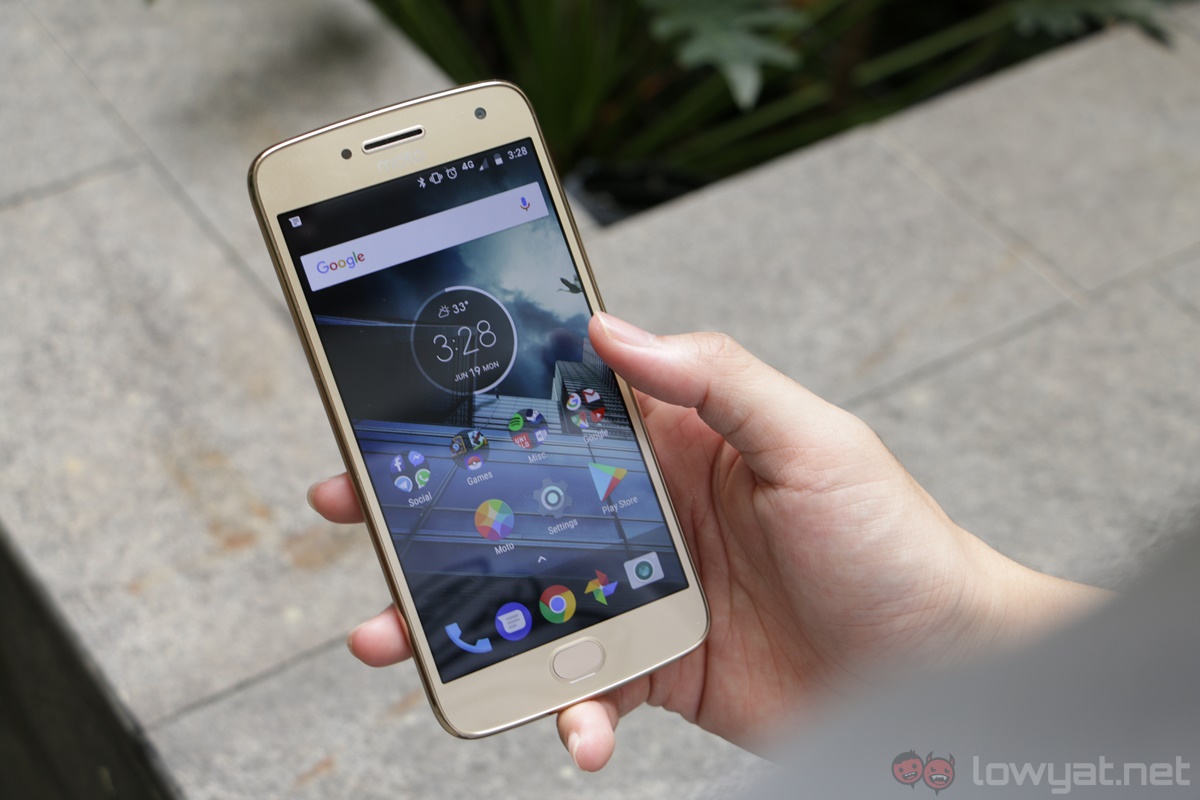In the mid-range segment, devices that offer the most value for money are usually the most successful ones; that’s mainly the reason why Xiaomi’s phones like the Redmi Note 4 are so popular among budget-conscious consumers. However, beyond sheer value for money, is there anything else that makes a mid-range smartphone stand out?
Enter the Moto G5 Plus. Retailing at RM1,299, it’s not quite as affordable as Xiaomi’s offering, but value for money isn’t what makes the G5 Plus such a good phone: it’s the whole package it offers.
Design & First Impressions
Truth be told: the Moto G5 Plus isn’t a very sleek-looking smartphone. It has a huge camera bump on the back, sizeable bezels, and the design of the phone as a whole looks very…dated. That being said, it’s the first Moto G with a metal build, which gives the G5 Plus a reassuring build quality.
But the Moto G5 Plus isn’t entirely a “metal” phone: only the back cover is aluminium. The frame of the device, on the other hand, is plastic. That is not to say the G5 Plus doesn’t feel like a solid phone, because it is. It feels comfortable to hold in my hands, it’s not quite as slippery as other phones – the Redmi Note 4 comes to mind here – and it has just the right amount of heft at 155g.
I also quite like the volume rocker and power button of the G5 Plus. Not only are they tactile (and satisfying to press), it’s also easy to differentiate between the two thanks to the textured power button. The fingerprint sensor of the G5 Plus is plenty impressive too: it’s fast, accurate, and the one-button navigation works incredibly well. I’ll elaborate more on this further down this review.
While the G5 Plus isn’t the most eye-catching phone in the market, its build quality and good ergonomics somewhat make up for its bland appearance. Design really isn’t the G5 Plus’ strong suit, but other aspects of this phone definitely make up for what it lacks in looks.
Hardware
On paper, the G5 Plus looks like any other decent mid-range smartphone in the market. It has a 5.2-inch 1080p display, a Qualcomm Snapdragon 625 chipset with 4GB of RAM, and a decently-sized 3,000mAh battery. But hardware is only one part of the equation: it’s how a particular device uses these hardware that really matters, and Motorola got the right balance between good enough hardware and excellent software with the G5 Plus.
Benchmark
Software
This is where the G5 Plus truly shines. Motorola devices have always offered excellent software experience, and the same remains true on this phone. Not only does the G5 Plus offer a near-stock build of Android – which feels very zippy and responsive – Motorola also implemented genuinely useful features on this device; some of which were brought over from the flagship Moto Z.
One such feature is Moto Display, which is really one of the best lock screen notification systems I’ve come across. Whenever a new notification comes in, Moto Display will show an icon for the app that is sending the notification. If I tap and hold on the icon, I can expand the notification; swipe up, and I’ll be led straight to the app.
And then there’s also the slew of very useful Moto Actions. I can “chop” the G5 Plus twice to switch on the flashlight; twist to launch the camera app; and even flip the phone face down to mute notifications and calls. While these gestures sound gimmicky, I actually found myself doing the very same gestures even after I switched phones; it’s really quite intuitive to use.
What’s new on the Moto G5 Plus is an alternative one-button navigation method. Instead of using Android’s default three-button navigation – it’s still available on the G5 Plus as on-screen buttons – I can use only the fingerprint sensor for navigation. Swiping left on the sensor acts as the back button, swiping right brings up the Recent Apps page, and tapping on the sensor brings me back to the home screen.
While this takes some getting used to, it’s definitely one of the best alternative navigation methods I’ve used; it’s better than Huawei’s approach, for one. The sensor registers my inputs accurately most of the time, and after I’m accustomed to this one-button navigation, going back to Android’s default navigation method felt a little…odd.
Software is definitely one of the Moto G5 Plus’ best qualities. I really like the no-nonsense approach Motorola takes with its software, and the features the company did add to the G5 Plus are genuinely useful.
Battery Life
Packed with a power-efficient Snapdragon 625 chipset, the G5 Plus has commendable battery life. I had no issues at all getting through a typical work day with the G5 Plus, and more impressively, I even managed to get close to six hours of screen on time with it.
Charging time of the G5 Plus, on the other hand, isn’t quite as impressive. Within 30 minutes of charging, I only got about 40% of battery life.
Display
The G5 Plus features a 5.2-inch 1920 x 1080 IPS display, which can get quite bright and vibrant. Its viewing angles are very good, and there really aren’t any major issues with it. Well, if I were to nitpick, I’d say the display’s colours are quite muted in comparison to higher-end phones, but this is really a given with most mid-range devices.
Audio
Front-facing speakers are not commonly found on smartphones, so it’s great to see that the G5 Plus’ earpiece acts as a mono speaker. While it’s slightly on the softer side of things, the speaker is definitely loud enough for media consumption and gaming. There’s no noticeable crackling or buzzing at maximum volume either.
Camera
If there’s one thing mid-range smartphones – or most smartphones, for that matter – can’t get quite right, it’s the camera. Motorola claims that the G5 Plus comes with the “most advanced camera in its class,” and after taking a number of shots with the G5 Plus, I…somewhat agree.
In broad daylight, the G5 Plus can snap really, really impressive-looking shots. Images are sharp, colours are vibrant, and the dynamic range is pretty good too. I’m actually quite surprised a mid-range smartphone like the G5 Plus can deliver such good camera performance.
However, the camera performance takes a dip in less ideal shooting conditions. The shutter speed slows down considerably, images are more grainy, and getting proper focus is much harder. The lack of optical image stabilisation really hurts the G5 Plus’ low light camera performance.
But for what it’s worth, the G5 Plus’ camera is plenty capable with the correct amount of lighting. Sure, its camera performance in low light conditions leaves much to be desired, but the G5 Plus is still “just” a mid-range smartphone here.
Sample Images
Competition
The mid-range segment is one of the most crowded ones in the Android space, so the Moto G5 Plus has some tough competition. Needless to say, one of its most notable competitors is definitely the Xiaomi Redmi Note 4.
Retailing from only RM799, the Redmi Note 4 features the very same Snapdragon 625 chipset, a bigger 5.5-inch 1080p display, as well as better battery life – thanks to its much larger 4,100mAh battery. On top of that, the top-of-the-line RM949 Redmi Note 4 also comes with double the G5 Plus’ internal storage at 64GB; all for RM350 less.
However, the G5 Plus does offer better camera performance. And more importantly, its software experience is far more functional and pleasant to use than MIUI 8 on the Redmi Note 4. Xiaomi’s software isn’t necessarily bad by any means, my personal preference leans more towards a stock Android experience.
Aside from Xiaomi’s offering, there’s also competition from the G5 Plus’ own extended family: the Lenovo P2. Not only does the P2 come with the same Snapdragon 625 chipset, RAM and internal storage as the G5 Plus, it also retails at RM1,299. For the same amount of money, the Lenovo P2 offers a bigger and more vibrant 5.5-inch 1080p Super AMOLED display, as well as a huge 5,100mAh battery.
But, again, the G5 Plus has better software experience and camera performance than the Lenovo P2; these two are some of the most noteworthy features of the former. Motorola’s signature features like Moto Display and Moto Actions really make the G5 Plus a more fun device to use overall.
Conclusion
The Moto G5 Plus may not offer the best value for money, but the device as a whole is a very complete mid-range smartphone. Its software experience is polished and pleasant to use, it has great battery life, and its camera is actually pretty good – bar the low light performance.
Of course, the G5 Plus is not perfect, but it’s definitely one of the most well-thought-out mid-range smartphones in the market now. It’s not just a smartphone to fill up Motorola’s mid-range catalogue: it’s Motorola’s most impressive iteration of the budget Moto G series yet.
Photography by Terry Bass and Leon Lam.
Follow us on Instagram, Facebook, Twitter or Telegram for more updates and breaking news.


